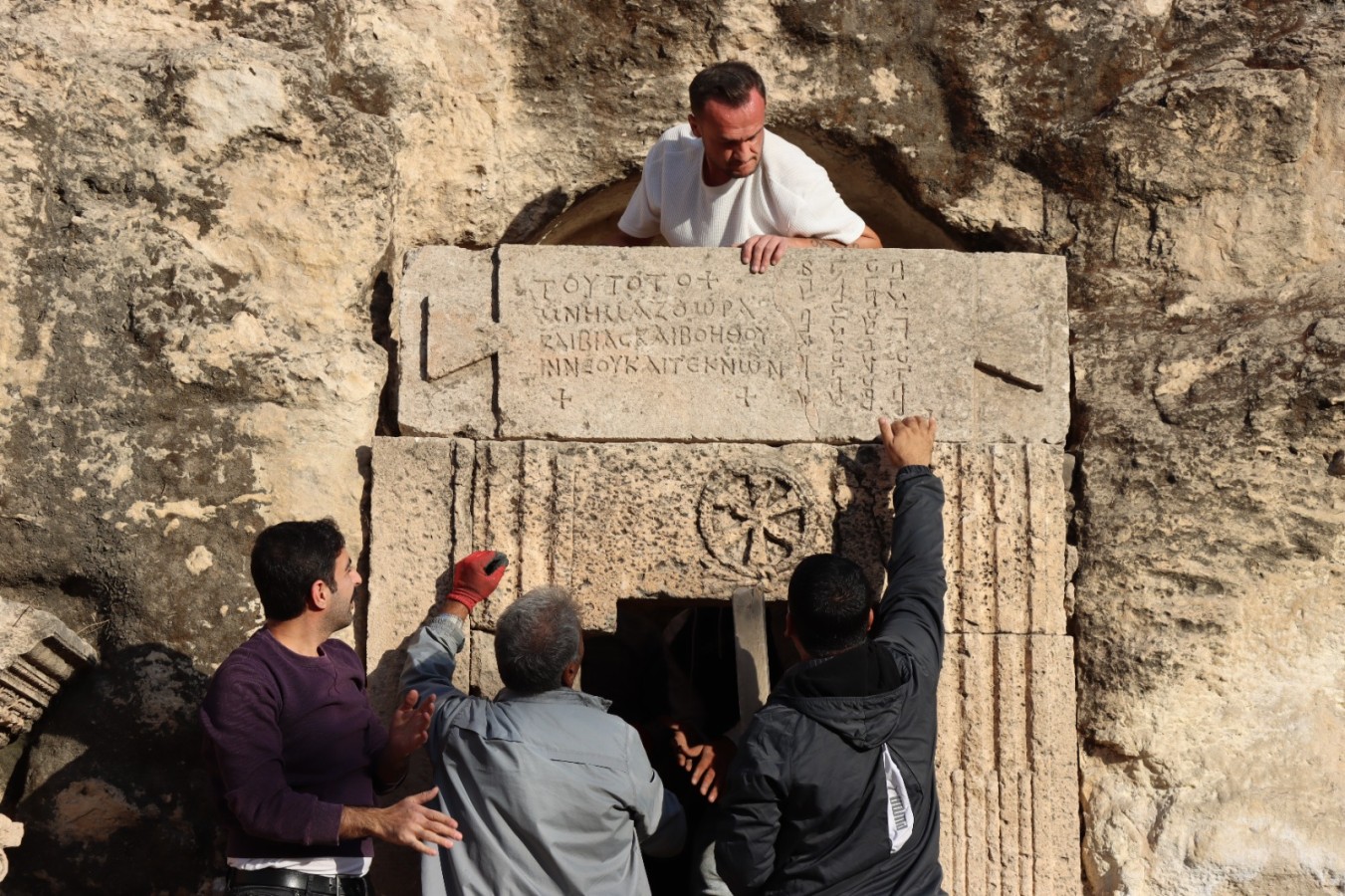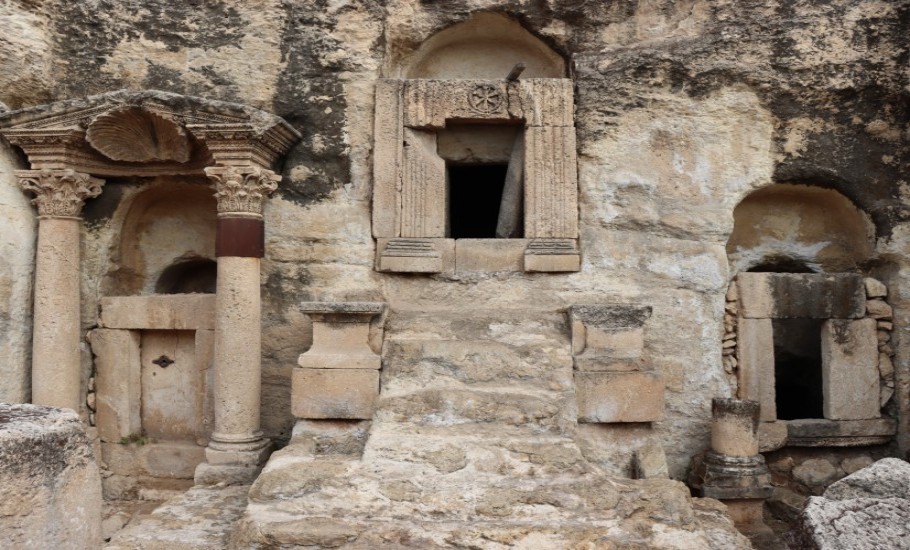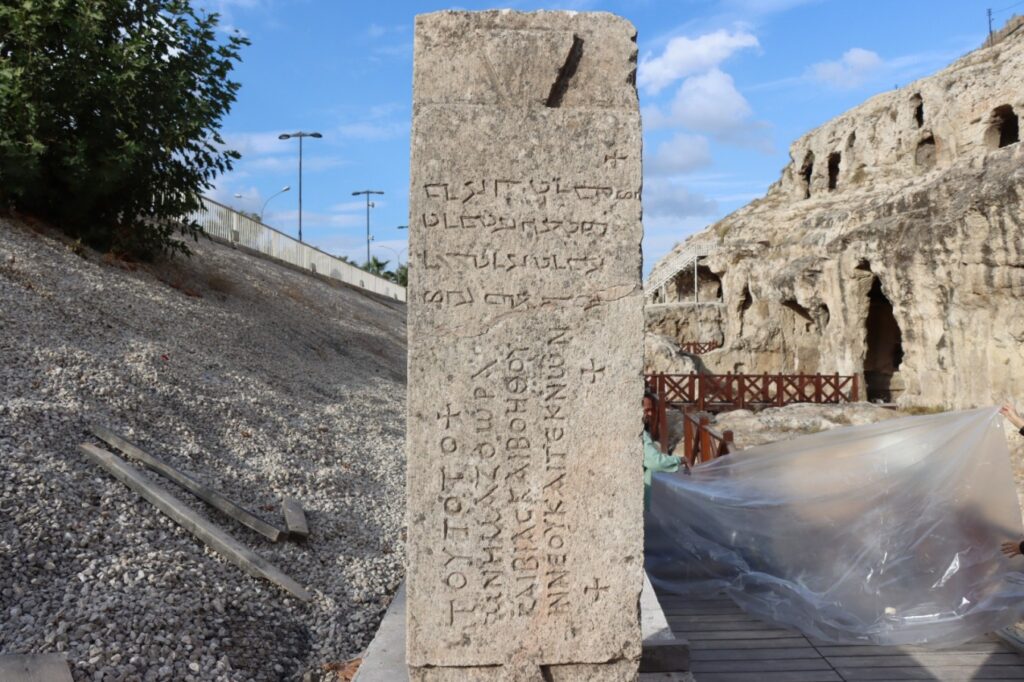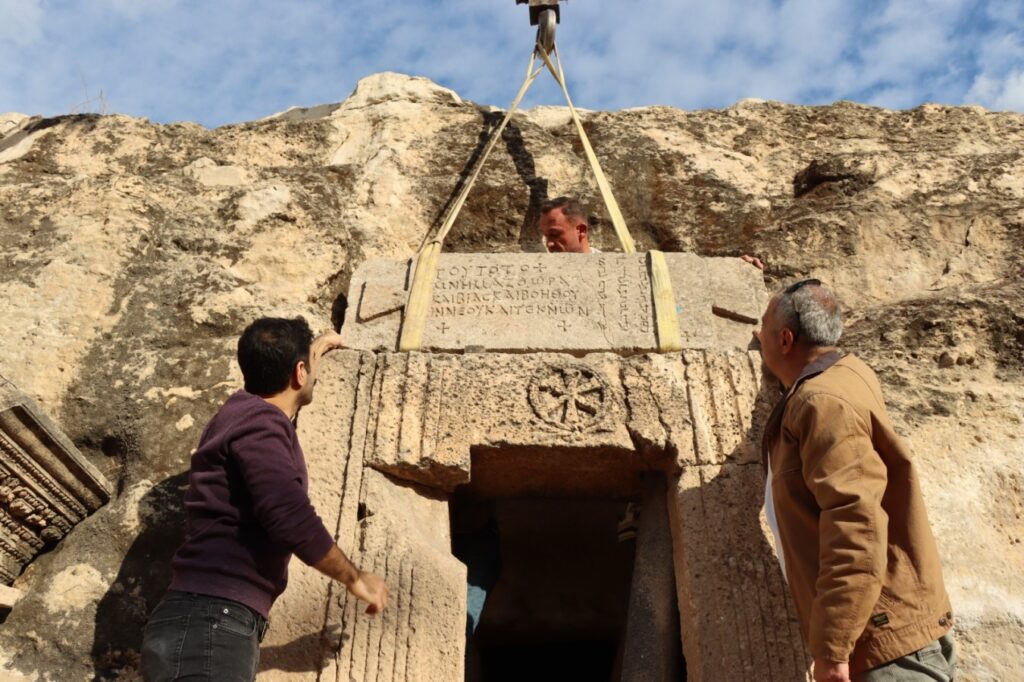
A tabula ansata featuring a bilingual inscription, found in front of a burial chamber adorned with the monogram of Jesus Christ, was restored
A bilingual inscription tabula ansata located in front of a burial chamber adorned with the monogram of Jesus Christ, found in the Kızılkoyun necropolis in Şanlıurfa, has been restored and returned to its original position.
Kızılkoyun Necropolis is located in the Balıklıgöl plateau of Şanlıurfa. It bears traces of Hellenistic and Roman-Byzantine periods with tombs dating back to the 2nd and 4th centuries AD.
Notably, the presence of both pagan and early Christian tombs in the necropolis is striking.
Kızılkoyun Necropolis was declared an archaeological site in 2012. Between 2013 and 2017, excavations uncovered 100 tombs, some of which remained undisturbed.
📣 Our WhatsApp channel is now LIVE! Stay up-to-date with the latest news and updates, just click here to follow us on WhatsApp and never miss a thing!!

The 2024 excavation season is ongoing, conducted by the Şanlıurfa Metropolitan Municipality and the Museum Directorate, with the assistance of archaeologists from the Tourism Promotion Branch Directorate.
During the excavation work at Kızılkoyun Necropolis, archaeologists discovered a tabula ansata featuring inscriptions in Greek and Aramaic in front of a burial chamber adorned with the monogram of Jesus Christ.

The tabula ansata featuring the bilingual inscription was found broken in half.
In a study conducted by Prof. Dr. Mustafa Adak from the Department of Ancient Languages and Cultures at Akdeniz University, the inscription was translated as: “This monument belongs to the children of Kineas, Zooras, Bias, and Boethos, and their children.”

According to Adak, except for Zooras, the other names are of Greek origin, and the inscription dates back to the 3rd century AD. This bilingual inscription is a valuable find that reflects the cosmopolitan nature of Edessa and the intercultural interactions of the time.
Additionally, Zeynep Nida Yıldırım, a specialist archaeologist from KUDEM, conducted research as part of her master’s thesis to examine the ornamental features and plan typology of burial chamber number 24.
Cover Photo: Sanliurfa Metropolitan Municipality
You may also like
- A 1700-year-old statue of Pan unearthed during the excavations at Polyeuktos in İstanbul
- The granary was found in the ancient city of Sebaste, founded by the first Roman emperor Augustus
- Donalar Kale Kapı Rock Tomb or Donalar Rock Tomb
- Theater emerges as works continue in ancient city of Perinthos
- Urartian King Argishti’s bronze shield revealed the name of an unknown country
- The religious center of Lycia, the ancient city of Letoon
- Who were the Luwians?
- A new study brings a fresh perspective on the Anatolian origin of the Indo-European languages
- Perhaps the oldest thermal treatment center in the world, which has been in continuous use for 2000 years -Basilica Therma Roman Bath or King’s Daughter-
- The largest synagogue of the ancient world, located in the ancient city of Sardis, is being restored











Leave a Reply